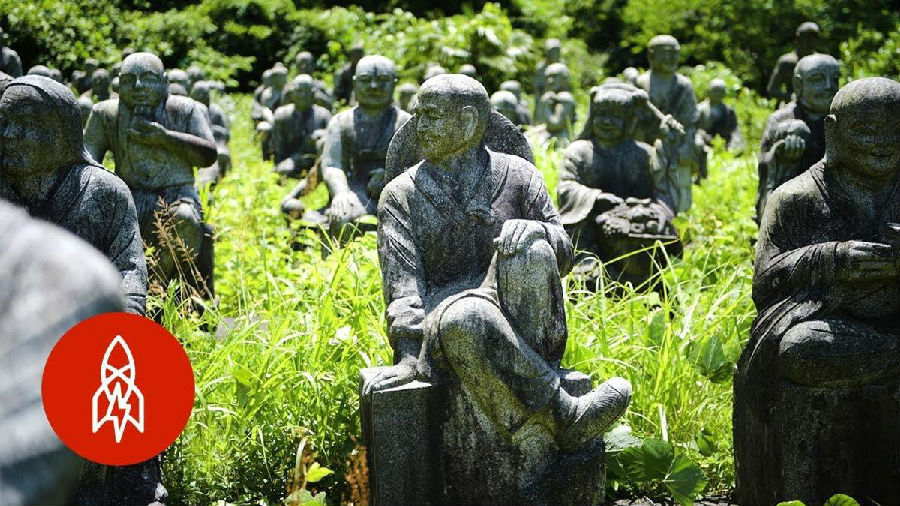This sculpture garden located in Japan was primarily unknown to the world until 2016 when a photographer stumbled upon it.
這個(gè)日本雕塑花園直到2016年被攝影師偶然發(fā)現(xiàn)后才為世界所知。
There are around 800 sculptures in this park,
公園里大約有800件雕塑,
depicting a mix of Buddhist deities and what are believed to be replicas of real people.
描繪了佛教里的諸位神佛,還有一些據(jù)說是真人雕像。
All were commissioned by a wealthy Japanese man named Mitsurou Furukawa.
所有這些雕塑都是一位名叫Mitsurou Furukawa的日本富豪發(fā)起的。
He is said to have paid six billion yen, around 60 million U.S. dollars to create this collection in 1989.
據(jù)說,他在1989年支付了60億日元(約六千萬美元)創(chuàng)造了這個(gè)收藏。

There is a large statue of Furukawa, which stands overlooking the park.
其中還有一座他本人的巨型雕像俯瞰著公園。
The people depicted are said to be his friends and family,
據(jù)說,雕像刻畫的都是他的親朋好友,
but it is unclear if they had any knowledge of their stony replicas.
但目前尚不清楚他們本人是否知道有這些石像。
They stand near a Japanese village,
這些雕像位于一個(gè)村莊附近,
the name of which translates to the village where you can meet Buddhist statues.
這個(gè)村莊的名字翻譯過來就是“可以見到佛像的村莊”。
Although these lifelike statues stare with blank expressions,
雖然這些栩栩如生的雕像只是表情呆滯地看著四周,
visitors say there is an unsettling feeling to this place and a concern that at night these aphogees aren't so still.
游客們還是說,這個(gè)地方會讓人覺得不安,還會讓人擔(dān)心夜間這些雕像不會像白天那么靜止。












